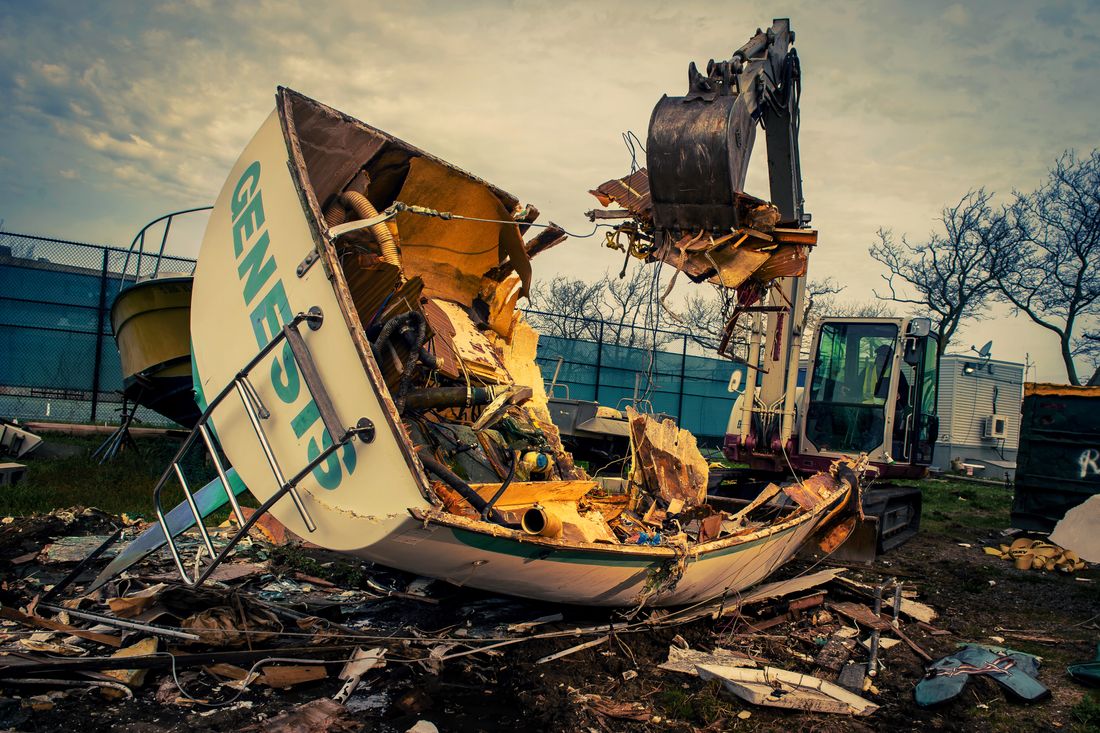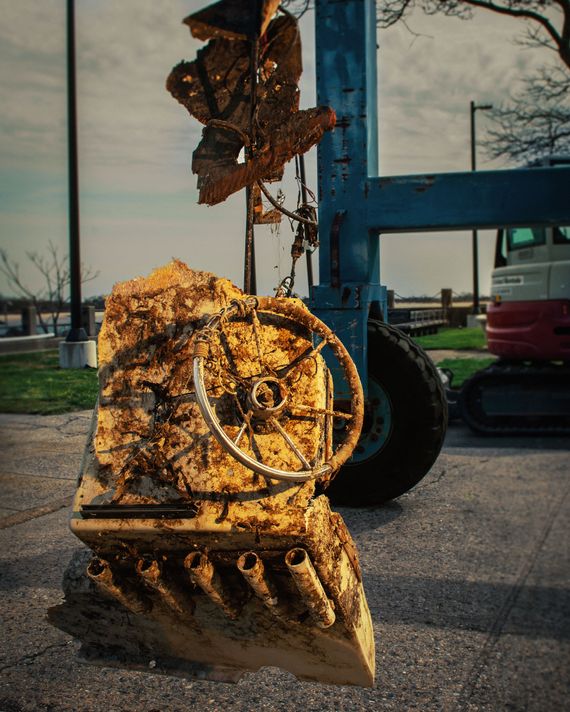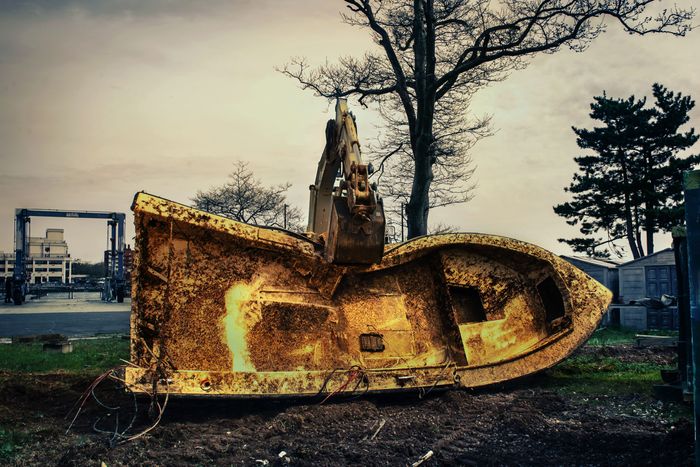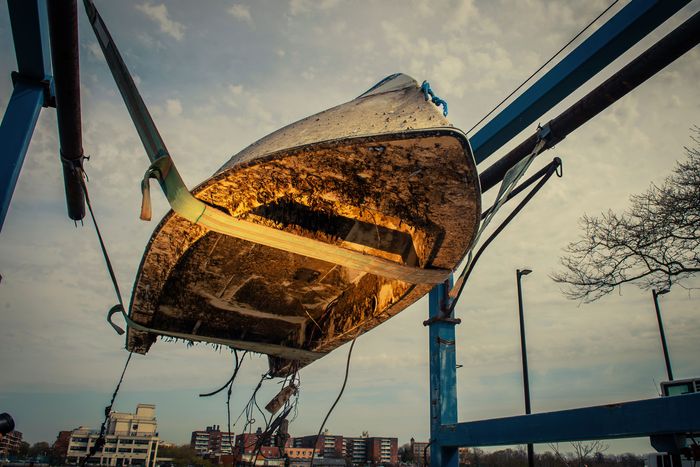
The grassy lot at the corner of the marina at Kingsborough Community College in Manhattan Beach looks like an exploded shipyard. The space is littered with masts, ship engines, fishing lines, and buoys. Abandoned boats have been stored here since Hurricane Sandy, but now that’s over: The city has just created the Office of Marine Debris Disposal and Vessel Surrendering, a Parks Department unit that will break them up and remove them. (Then the lot will become a basketball court.) The office is partly the brainchild of Nate Grove, the Parks chief of waterfront and marine operations, and I’ve joined him today for an early smashup. Grove has been waiting for this moment for more than a decade. “There’s nothing like the smell of crushing fiberglass in the morning,” he jokes.
There’s an old saying that the two best days in a boat owner’s life are the one when they buy a boat and the one when they sell it. If this was how it actually worked, that would make Grove’s life a lot easier. But owners stuck with their bad decisions sometimes don’t sell their boats — instead they simply abandon them on the city’s waterways, even going so far as to key out the identification number on the hull. “People are desperate to figure out what to do with them, and sometimes they don’t have an outlet,” Grove said. When Grove is removing one boat from popular scuttling sites like Shell Bank Creek, he’ll often find more vessels piled up underneath. The city can issue summonses for abandoned boats and the state can assess tax liens, but it can be difficult to trace them to their last owners, especially when ID numbers are missing. If the owner can’t be tracked down, Grove’s department steps in to, in his phrasing, “remove the hazard.”
The office deals mainly with personal vessels that are less than 50 feet long, which, on dry land, still look sizable. Grove and I watch together as an excavator claws at the derelict hull of the Genesis, breaking it like an eggshell. It sounds like a car crash as the boat snaps into three-foot pieces, some of which remain linked by various lines that must then be cut. Grove bounces on his feet, happy to see the boats slowly disappear, as the debris gets dropped into a giant green dumpster.


Abandoned boats are not only an eyesore but also a navigational hazard, and they can, Grove tells me, leach contaminants (leftover fuel, microplastics) into the water. The city has been dealing with these boats ad hoc, but that led to a backlog: There are, the Parks Department estimates, something like 800 abandoned boats littering the city. Grove is setting up a program where owners can voluntarily surrender their unwanted vessels rather than merely ditching them.
Part of the problem is that the upkeep of a boat is expensive but its materials don’t have much resale worth. Unlike cars, boats aren’t principally made from metal with scrap value. But Paul Olsen, the contract employee operating the excavator, tells me that anything reusable — lead keels, masts, engines — is removed before the fiberglass or wooden hulls are crushed. It takes him around 30 minutes to dismantle a boat before he’s on to the next one. A rust-stained sailboat — painted what was probably once a beautiful baby blue — dangles in the air for a few seconds before Olsen rips off the mast. He picks up another small boat whole and stuffs it directly into the dumpster as though he’s crumpling a piece of paper. In general, though, Olsen tries to tear everything up into small pieces as a courtesy for the landfill operators on the other end. “They don’t like it when it’s a full boat in the dumpster,” Olsen says.






